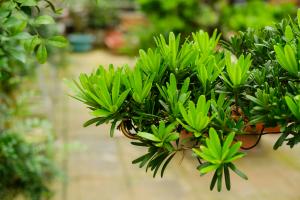How Long Can You Wait to Plant Bare Root Trees
Bare root trees are a popular choice for many gardeners due to their ease of planting and relatively lower cost when compared to their potted counterparts. Bare root trees are sold with their roots exposed without soil, and this keeps them lightweight and easier to handle, transport, and plant. However, one common question that many gardeners have is how long can they wait to plant bare root trees?
The Best Time to Plant Bare Root Trees
The best time to plant bare root trees is in the early spring or late fall. Ideally, you should plant your bare root trees as soon as you can after purchasing them. This allows them to start their growth cycle as early as possible, and it enables their roots to establish themselves before the hot summer months.
Can You Store Bare Root Trees?
So, what do you do if you aren't able to plant your bare root trees immediately? Can you store them safely? The answer is yes, but you need to take a few precautions. If you can't plant your bare root trees within a couple of days of purchasing them, you can keep them in a cool, damp place like a basement, garage, or root cellar. You should then cover the roots with some moist soil or sphagnum moss to keep them hydrated until you're ready to plant them.
How Long Can You Store Bare Root Trees?
If you're unable to plant your bare root trees within a week of purchase, the likelihood of poor growth or loss of your tree increases. Two weeks is generally the maximum amount of time that trees can stay dormant and healthy once removed from their storage medium or nursery. If you resist the temptation to plant them outside of the optimal planting window, you can still get successful bud break as long as they remain healthy and hydrated during the storage time.
Things to Consider When Planting Bare Root Trees
When you're finally ready to plant your bare root trees, there are a few things you should keep in mind to ensure the best possible outcome. Firstly, bare root trees should be planted in holes that are wide enough to accommodate their roots without bending or twisting them. Additionally, you should make sure to saturate the hole with water before planting to ensure good soil contact with the roots. This helps the trees establish themselves quickly and can reduce transplant shock.
It's also essential to backfill the hole with the soil you removed, and ensure it's free of rocks and debris that could damage the roots. Check the depth of the planting hole to make sure the bud union (the surrounding rough patch of tissue where the tree was grafted) is set at soil level with the surrounding ground. Finally, mulch around the tree's base to help retain moisture, and stake the tree to help it stand upright until it's well-established.
Final Thoughts
A bare root tree's success depends on proper planting practices and proper storage time. The sooner you plant your bare root tree, the better it will grow. If you're unable to plant it immediately, be sure to store it in a cool, damp place and keep the roots hydrated. By following the right methods and best practices, you can ensure that your bare root tree thrives and grows into a beautiful addition to your garden or landscape.

 how many times do yo...
how many times do yo... how many planted tre...
how many planted tre... how many pine trees ...
how many pine trees ... how many pecan trees...
how many pecan trees... how many plants comp...
how many plants comp... how many plants can ...
how many plants can ... how many plants and ...
how many plants and ... how many pepper plan...
how many pepper plan...
































